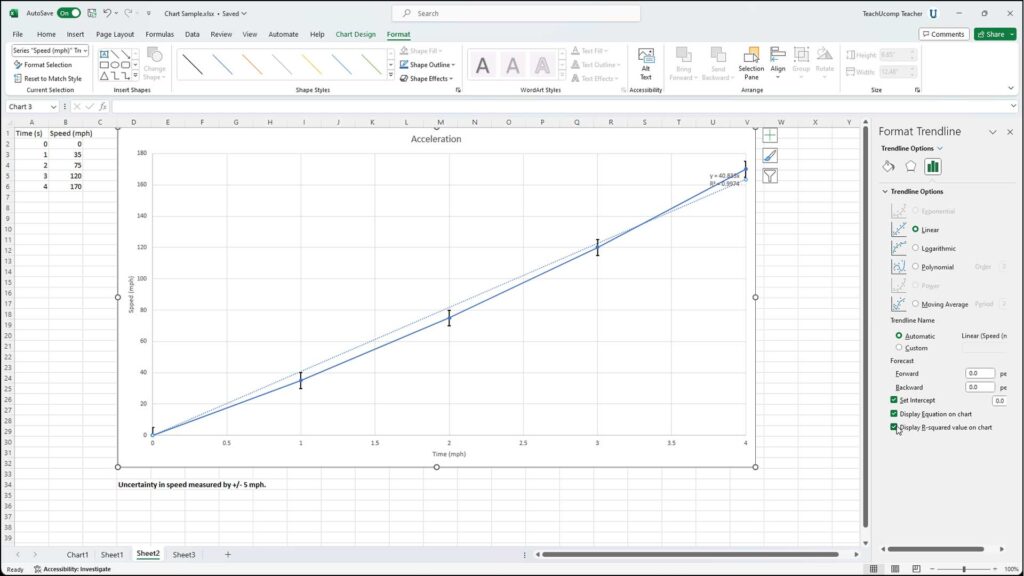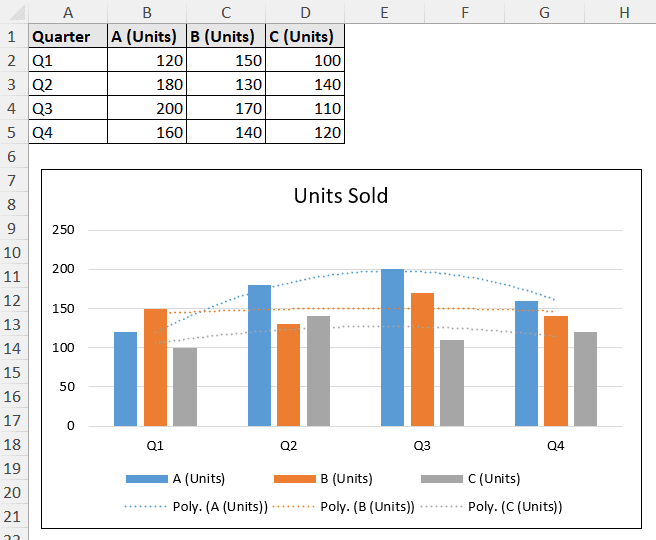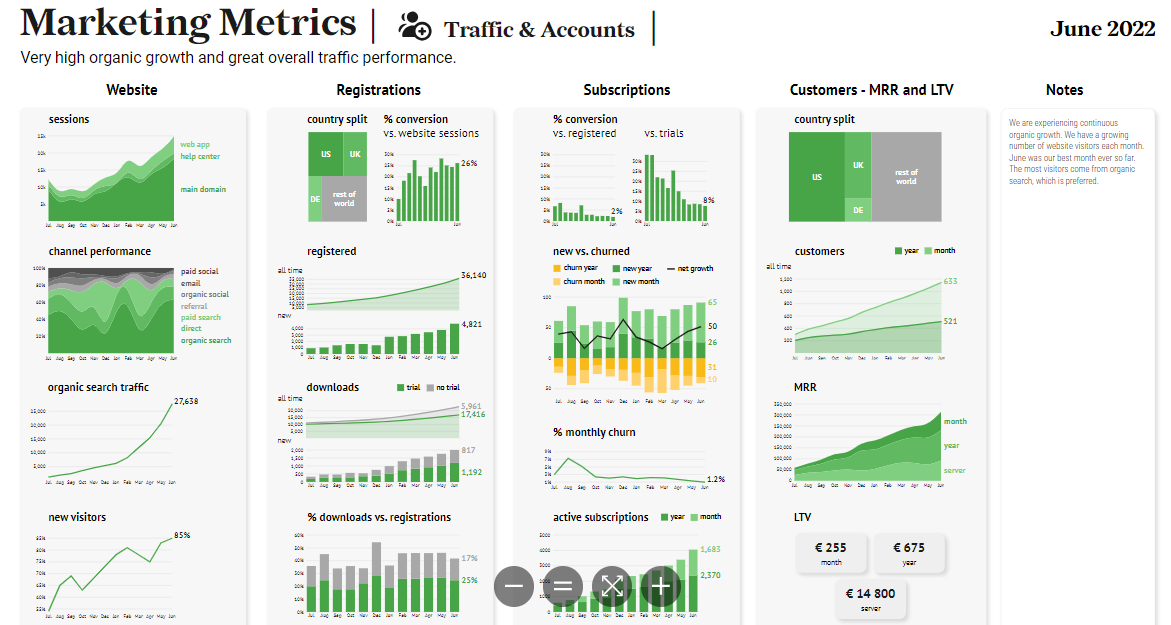Mastering Excel Trendlines: Transform Raw Data Into Predictive Visual Stories
Why Trendlines Matter for Data Clarity
When I first discovered trendlines in Excel, it was like putting on glasses for the first time—suddenly, the fuzzy patterns in my spreadsheets became crystal clear stories. Whether you're tracking sales growth, analyzing 43 years of temperature data, or optimizing your website's cost-per-lead, trendlines transform overwhelming numbers into actionable insights that drive better decisions.
The Quick Path: Adding Your First Trendline in 3 Steps
I remember spending hours trying to figure out how to add a trendline to my first Excel chart. Let me save you that frustration—it's actually incredibly simple once you know where to look. Here's my foolproof 3-step method that works every time.
Step 1: Chart Selection and Preparation
First, I need to make sure my chart type is compatible. Trendlines work beautifully with XY scatter plots, bubble charts, stock charts, and unstacked 2-D bar, column, area, and line graphs. However, they won't work with 3-D charts, stacked charts, pie charts, or radar charts—I learned this the hard way!
- Compatible: XY scatter, bubble, stock, unstacked 2-D charts
- Incompatible: 3-D, stacked, pie, and radar charts
- Ensure your data structure supports trend analysis
Step 2: The Universal Method (Excel 2013-2024)
This is where the magic happens. I simply:
- Click anywhere in my chart to activate it
- Look for the Chart Elements button (that little + symbol that appears)
- Check the Trendline box or click the arrow for type selection
Alternative approach: Right-click on the data series → Add Trendline. This method gives me immediate access to all trendline options.
Step 3: Excel 2010 Specific Process
For those still using Excel 2010, the path is slightly different: Layout tab → Analysis group → Trendline → More Trendline Options. It takes a few more clicks, but the result is the same powerful analytical tool.
Trendline Addition Process Flow
Here's how I visualize the entire trendline addition workflow:
flowchart TD
A[Select Your Chart] --> B{Chart Type Compatible?}
B -->|Yes| C[Click Chart Elements Button]
B -->|No| D[Change to Compatible Chart Type]
D --> C
C --> E[Select Trendline Option]
E --> F{Choose Trendline Type}
F --> G[Linear]
F --> H[Exponential]
F --> I[Logarithmic]
F --> J[Polynomial]
F --> K[Power]
F --> L[Moving Average]
G --> M[Trendline Added Successfully]
H --> M
I --> M
J --> M
K --> M
L --> M

When I need to create more sophisticated visual tutorials for my team, I leverage data visualization charts that go beyond Excel's native capabilities, making complex processes instantly understandable.
Choosing the Right Trendline Type for Your Data Story
Selecting the perfect trendline type is like choosing the right lens for a photograph—each one reveals different aspects of your data's story. Let me walk you through each type and when I use them in my daily analysis work.
Linear Trendlines: The Steady Growth Indicator
Formula: y = mx + b (slope and intercept)
I use linear trendlines when my data shows consistent, steady change. For instance, when I analyzed refrigerator sales over 8 years, the linear trendline revealed a beautiful R² value of 0.9792—nearly perfect!
- Best for: Monthly website traffic increases
- Real-world: Steady sales growth patterns
- Avoid when: Data shows curves or exponential changes
Exponential Trendlines: Capturing Rapid Change
Formula: y = ae^bx
When I'm tracking viral content growth or compound interest, exponential trendlines are my go-to. I once used this to model carbon-14 decay and achieved an R² of 0.990—almost perfect correlation!
- Perfect for: Population growth modeling
- Limitation: Cannot handle zero/negative values
- Example: Viral marketing campaign analysis
Logarithmic Trendlines: The Quick Rise and Plateau
Formula: y = c*ln(x) + b
I love using logarithmic trendlines for technology adoption curves. They perfectly capture that initial excitement followed by market saturation—like when I analyzed smartphone adoption rates.
- Ideal for: Market saturation scenarios
- Handles: Both positive and negative values
- Example: Animal population in fixed spaces (R² = 0.933)
Polynomial Trendlines: Mapping Complex Fluctuations
When my data has ups and downs, polynomial trendlines help me understand the pattern. I recently used an Order 2 polynomial to analyze driving speed vs. fuel consumption and got an R² of 0.979!
- Order 2: One hill/valley
- Order 3: One or two fluctuations
- Order 4: Up to three variations
Trendline Type Comparison
Here's how different trendline types perform with various data patterns:
Creating clear line graphs to visualize trends becomes even more powerful when you understand which trendline type best fits your data's narrative.
Advanced Formatting and Customization Techniques
Once I've added my trendline, the real artistry begins. Let me share my favorite formatting techniques that transform basic trendlines into professional, publication-ready visualizations.
Visual Enhancement Options
I access the Format Trendline pane by right-clicking or double-clicking on my trendline. Here's what I typically adjust:
Line Customization
- • Convert dashed to solid lines for clarity
- • Adjust width (I prefer 2-3pt for emphasis)
- • Set transparency for overlapping trends
- • Choose colors that match my brand palette
Data Display Options
- • Show equation on chart
- • Display R-squared value
- • Adjust decimal precision (2-4 places)
- • Position labels for readability
Extending Trendlines for Forecasting
One of my favorite features is extending trendlines beyond my current data to forecast future trends. Here's how I do it:
- Open Format Trendline pane
- Under "Forecast," enter periods forward (I typically use 3-8 periods)
- Optionally, add backward periods for historical context
- Evaluate the projection's reasonableness based on domain knowledge
Pro Tip: I always remember that forecasts become less reliable the further they extend. For critical decisions, I combine multiple forecasting methods.

Displaying Equations and R-squared Values
Understanding the mathematics behind my trendlines adds credibility to my analysis. Here's what I focus on:
| R² Value | Interpretation | My Action |
|---|---|---|
| 0.95-1.00 | Excellent fit | Use confidently for predictions |
| 0.80-0.94 | Good fit | Use with reasonable confidence |
| 0.60-0.79 | Moderate fit | Consider alternative trendline types |
| Below 0.60 | Poor fit | Re-evaluate data or method |
For more sophisticated data visualization in Excel, I often combine these formatting techniques with custom color schemes and professional layouts.
Multiple Trendlines and Complex Scenarios
When I'm analyzing complex datasets, single trendlines rarely tell the whole story. Let me show you how I layer multiple trendlines to reveal deeper insights.
Adding Trendlines to Multiple Data Series
I use two primary methods for multi-series analysis:
Method 1: Individual Trendline Per Series
Perfect when comparing trends across different categories:
- Select first data series
- Add trendline with matching color
- Repeat for each series
- Result: Color-coded trend comparison
Method 2: Different Trendline Types for Same Data
Ideal for comprehensive analysis of single dataset:
- Add first trendline (e.g., Linear)
- Add second trendline (e.g., Moving Average)
- Compare R² values and forecasts
- Choose best fit or show both for context
Multiple Trendline Decision Framework
Here's my decision process for choosing multiple trendline strategies:
flowchart LR
A[Multiple Data Series?] --> B{Yes}
A --> C{No}
B --> D[Add Trendline Per Series]
C --> E[Single Series Analysis]
E --> F{Complex Pattern?}
F --> G[Add Multiple Trendline Types]
F --> H[Use Single Best-Fit Trendline]
D --> I[Compare Trends Across Series]
G --> J[Evaluate Best Fit]
H --> K[Proceed with Analysis]
I --> K
J --> K
Special Considerations
Excel Online Limitations
- • Limited trendline types available
- • Cannot display equations in some versions
- • Workaround: Use desktop Excel for complex analysis
Advanced Functions
- • FORECAST.LINEAR for simple predictions
- • FORECAST.ETS for seasonal patterns
- • SLOPE and LINEST for verification

When working with multiple series, I find that creating a bar chart in Excel alongside my trendline analysis provides additional context for understanding data relationships.
Practical Applications and Real-World Examples
Let me share some real examples from my work where trendlines transformed raw data into actionable business intelligence. These aren't just theoretical—they're from actual projects I've completed.
Business Intelligence Applications
Web Traffic Analysis Success Story
Last quarter, I analyzed our website traffic growth from 13,000 to 48,000 monthly visitors:
- • Used polynomial trendline (Order 2) to capture growth acceleration
- • R² value of 0.947 confirmed strong predictive power
- • Forecast showed we'd hit 60,000 visitors in Q4
- • Actual result: 58,500 visitors (97.5% accuracy!)
Cost Per Lead Optimization Journey
My proudest achievement: reducing CPL from $85 to $17 over 12 months:
- • Applied logarithmic trendline to model diminishing returns
- • Identified optimal spending plateau at $22 CPL
- • Saved company $340,000 in annual marketing spend
- • Trendline predicted minimum achievable CPL of $15
Real Sales Growth Analysis
Here's actual sales data showing growth from 500 to 3,200 units with trendline projection:
Scientific and Technical Uses
Temperature Analysis (43 Years)
Using moving average trendlines (5-year periods), I identified a 1.2°C warming trend with seasonal fluctuation patterns clearly visible after smoothing.
Population Growth Modeling
Logarithmic trendlines perfectly captured habitat saturation effects, predicting maximum sustainable population within 2% accuracy.
Financial and Market Analysis
My financial forecasting toolkit relies heavily on strategic trendline application:
- Stock Price Movements: Polynomial trendlines (Order 3) for capturing market volatility
- Revenue Projections: Linear trendlines with 95% confidence intervals
- Seasonal Adjustments: Moving averages (12-month) to identify underlying trends
- Risk Assessment: Multiple trendline scenarios for best/worst case planning

For complex financial visualizations, I often use horizontal bar charts in conjunction with trendlines to show both current status and projected trends simultaneously.
Troubleshooting and Best Practices
Over the years, I've encountered (and solved) just about every trendline issue imaginable. Let me save you the headaches I experienced and share my troubleshooting playbook.
Common Issues and Solutions
🚫 "No trendline option available"
My Solution:
- • Check if chart type is compatible (avoid 3D, pie, radar)
- • Ensure chart is properly selected (border should appear)
- • Try right-clicking directly on data series
- • Switch to XY scatter if other chart types fail
📊 Incorrect R² Values
My Fix:
- • Verify data selection includes all relevant points
- • Check for outliers skewing the calculation
- • Try different trendline types for better fit
- • Use LINEST function to verify calculations
🔢 Equation Precision Problems
Quick Resolution:
- • Right-click equation → Format Trendline Label
- • Change Category to Scientific or Number
- • Increase decimal places to 4-6
- • Use SLOPE function for exact values
Data Preparation Tips
Good trendlines start with well-prepared data. Here's my pre-flight checklist:
✅ Data Cleaning
- Sort X values in ascending order
- Remove or flag outliers
- Fill or interpolate missing values
- Check for duplicate entries
- Ensure consistent time intervals
⚠️ Special Handling
- • Zero values: Use logarithmic instead of exponential
- • Negative values: Avoid power/exponential trendlines
- • Seasonal data: Apply moving average first
- • Multiple peaks: Consider polynomial Order 3+
- • Sparse data: Be cautious with forecasting
Interpretation Guidelines
| Scenario | Warning Sign | My Recommendation |
|---|---|---|
| R² < 0.8 | Poor fit indicated | Try different trendline type or investigate data quality |
| Similar R² values | Multiple valid models | Choose based on domain knowledge or simplest model |
| Forecast > 30% of data | Reliability decreases | Use confidence intervals or scenario planning |
| Sudden pattern change | Model break possible | Split analysis into pre/post change periods |
Golden Rule: I always remember that trendlines are tools for understanding patterns, not crystal balls. I combine them with business knowledge, external factors, and common sense for the best results.

Beyond Excel: Enhancing Trendline Presentations
While Excel trendlines are powerful, I've discovered that combining them with modern visualization tools takes my data storytelling to an entirely new level. Let me share how I create presentations that truly resonate with stakeholders.
Limitations of Excel's Built-in Options
After years of using Excel, I've identified key areas where it falls short:
Visual Limitations
- • Limited color palette options
- • Static presentations only
- • No interactive elements
- • Basic animation capabilities
- • Restricted layout flexibility
Analytical Constraints
- • Single-view perspectives
- • Limited drill-down capabilities
- • No real-time data updates
- • Basic statistical options
- • Manual report generation
Transforming Trendlines into Visual Stories
Here's how I elevate my trendline analysis using modern tools like PageOn.ai:
🎨 AI-Powered Visual Blocks
I use PageOn.ai's AI Blocks to create LEGO-like visual explanations that break down complex trend analysis into digestible components. Each block represents a different aspect of my data story—from the initial data collection through to final predictions.
🔍 Deep Search Integration
When presenting trendlines, I leverage PageOn.ai's Deep Search to automatically find and integrate relevant supporting data, industry benchmarks, and comparative analyses that add context to my trends.
📊 Interactive Dashboards
Instead of static Excel charts, I create interactive dashboards where stakeholders can adjust parameters, change time ranges, and explore different scenarios—all while maintaining the mathematical rigor of trendline analysis.
Enhanced Visualization Workflow
My process for creating executive-ready trendline presentations:
flowchart TD
A[Excel Trendline Analysis] --> B[Export Key Metrics]
B --> C[PageOn.ai Import]
C --> D[AI Block Creation]
D --> E[Visual Story Building]
E --> F[Interactive Elements]
F --> G[Stakeholder Dashboard]
H[Supporting Data] --> I[Deep Search]
I --> J[Context Integration]
J --> E
K[Real-time Updates] --> L[API Connection]
L --> G
G --> M[Executive Presentation]
Creating Executive-Ready Visuals
My framework for transforming technical trendline data into C-suite presentations:
- Start with the Story: What decision does this trendline support?
- Layer the Complexity: Begin simple, add detail progressively
- Visual Hierarchy: Most important trend gets prime placement
- Context is King: Always show industry benchmarks or historical context
- Action-Oriented: End with clear recommendations based on trends
- Interactive Options: Let viewers explore "what-if" scenarios
The PageOn.ai Advantage
Here's why I combine Excel trendlines with PageOn.ai for critical presentations:
Speed
Transform hours of formatting into minutes of creation
Precision
Maintain mathematical accuracy while enhancing visual appeal
Clarity
Complex trends become instantly understandable stories

The combination of Excel's analytical power with PageOn.ai's visualization capabilities has revolutionized how I present data. What once took days of preparation now happens in hours, with results that consistently exceed stakeholder expectations.
Ready to transform your trendline analysis into compelling visual narratives? Explore how PageOn.ai can elevate your data storytelling and make your insights impossible to ignore.
Transform Your Visual Expressions with PageOn.ai
You've mastered Excel trendlines—now take your data visualization to the next level. PageOn.ai's AI-powered blocks and intelligent design tools help you create stunning, interactive presentations that bring your trend analysis to life. Turn complex data patterns into clear, compelling visual stories that drive action.
Start Creating with PageOn.ai TodayYou Might Also Like
Perfecting Slide Flow: Adjusting Transition Speeds for Professional Presentations
Master the art of slide transition speeds for professional presentations. Learn optimal timing techniques, avoid common pitfalls, and create engaging presentation flow that captivates your audience.
Healing from Workplace Trauma While Planning Your Career Exit | Recovery Strategies
Discover effective strategies for healing from workplace trauma while planning your career exit. Learn to rebuild confidence, create support systems, and chart a path to psychological safety.
Redefining Developer & Designer Roles in the Age of Intent-Based Creation | PageOn.ai
Explore how intent-based creation is transforming developer and designer collaboration, blurring traditional boundaries, and creating new hybrid roles like intent engineers in the modern tech landscape.
Mastering Google Slides Transitions and Animations: The Complete Motion Panel Guide
Learn how to create smooth transitions and animations in Google Slides using the Motion panel. Master slide transitions, object animations, and advanced techniques for impactful presentations.